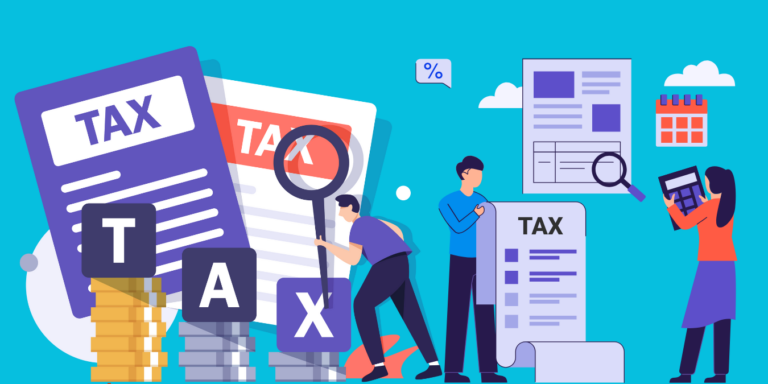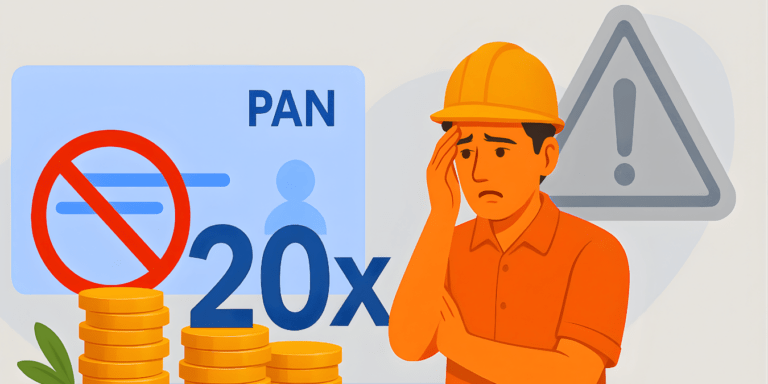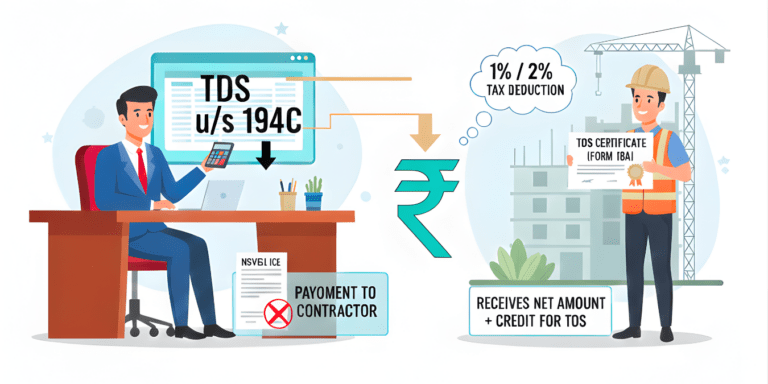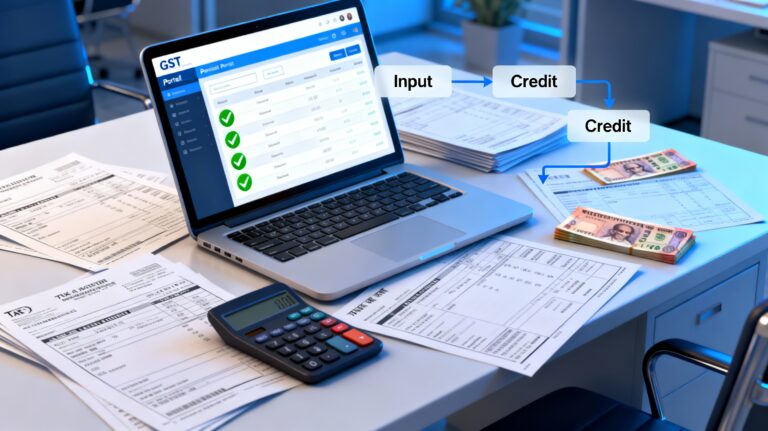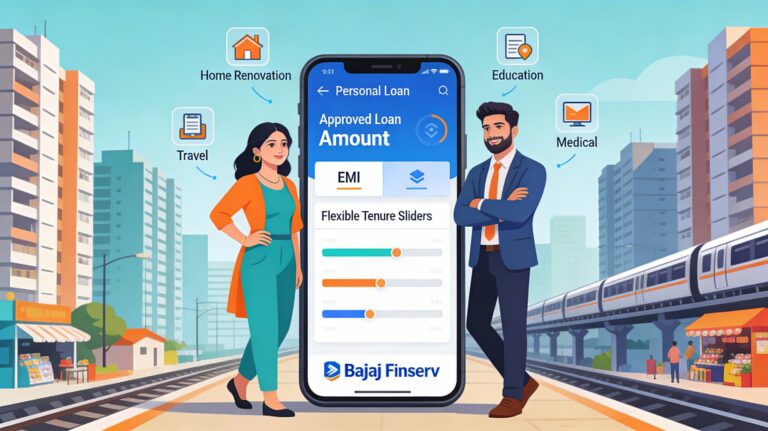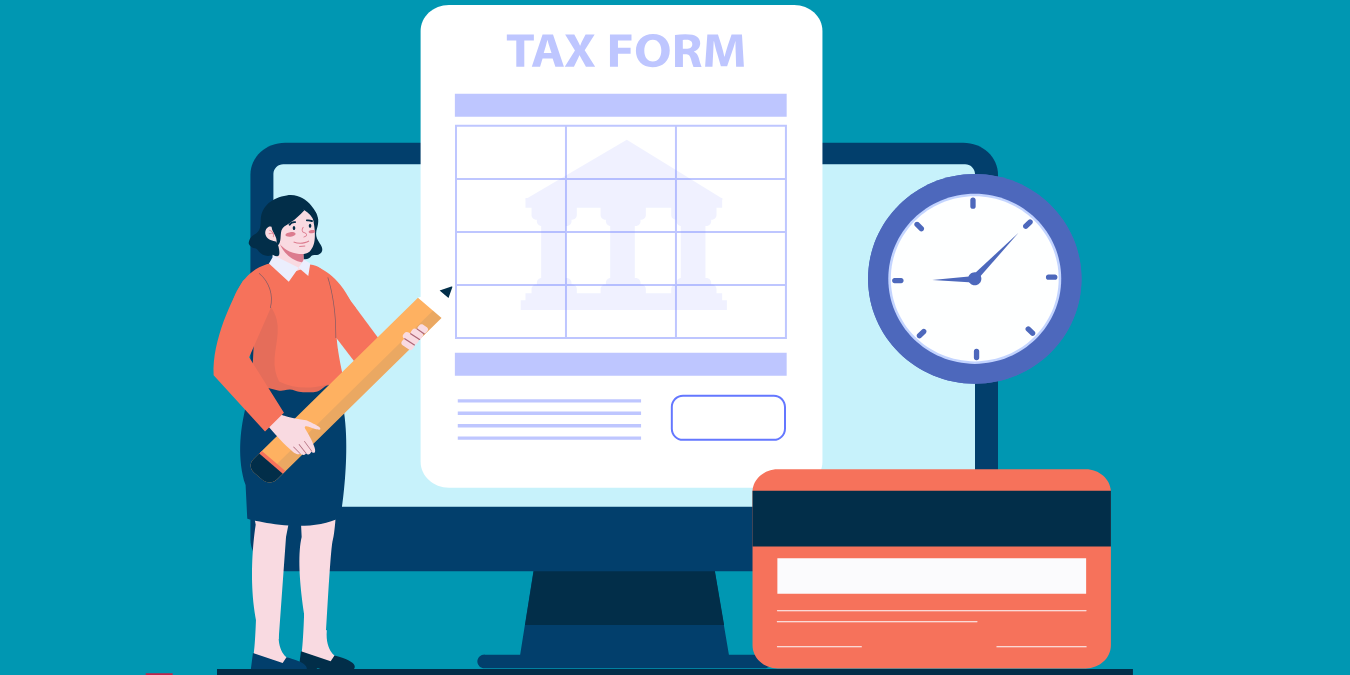
How to File Form 10-IEA in 2025: Essential Guide for Indian Taxpayers Opting Out of New Regime
Will you lose ₹75,000 in tax savings by midnight, September 15, 2025? For Indian freelancers and business owners, Form 10-IEA is your secret weapon to escape the new tax regime’s deduction trap. One missed step, and HRA, 80C vanish! Shocking 2025 updates reveal AI scrutiny and extended deadlines. Can you outsmart the system before it’s too late? Unlock expert hacks and avoid fatal errors to save lakhs. Act now—or regret it when your ITR bites!
Filing Form 10-IEA is an essential tax compliance step for Indian taxpayers who wish to opt out of the new tax regime and continue under the old tax regime for FY 2024-25 (AY 2025-26). With the evolving tax landscape in India, understanding this form’s purpose, deadlines, and filing process can save taxpayers from losing critical deductions and exemptions. This guide provides a detailed, user-friendly walkthrough of the entire process based on the latest 2025 rules, ensuring compliance and optimizing tax benefits effectively.
Why Form 10-IEA Matters for Indian Taxpayers in 2025
As India’s economy surges forward with GDP projections hitting 7.2% in 2025 per RBI estimates, taxpayers—especially those in bustling metros like Mumbai or startup hubs like Bengaluru—are grappling with higher incomes but also steeper living costs. The new tax regime under Section 115BAC, introduced to simplify filings, offers lower rates but strips away beloved deductions like those under Section 80C for investments in PPF or ELSS funds, which many middle-class families rely on. For FY 2024-25 (AY 2025-26), if you have business or professional income—think freelancers in IT, small shop owners in Delhi markets, or consultants in Hyderabad—failing to file Form 10-IEA means you’re stuck in the new regime by default, potentially paying thousands more in taxes.
This isn’t just about numbers; it’s about preserving financial flexibility in a post-pandemic era where health insurance premiums (Section 80D) and home loan interests (Section 24) are lifelines for millions. According to a 2025 survey by the Confederation of Indian Industry (CII), over 60% of self-employed professionals prefer the old regime for its holistic benefits, highlighting the form’s relevance amid evolving policies like the Finance Act 2025’s minor tweaks to exemption limits.
Opting out via Form 10-IEA ensures you retain these perks, but timing is everything. With the Income Tax Department rolling out AI-driven scrutiny in 2025, non-compliance could trigger notices, adding stress to your already hectic schedule. This guide, tailored for Indian contexts like joint family setups (HUFs) or regional business norms, demystifies the process to help you make informed choices.
Form 10-IEA filing is crucial for Indian taxpayers opting out of the new tax regime to retain valuable deductions and exemptions under the old tax system in FY 2024-25. This step-by-step guide explains how to file Form 10-IEA online via the Income Tax e-filing portal before key deadlines to avoid automatic taxation under the new regime. It highlights important tips to avoid common mistakes like missed deadlines, incorrect details, or improper verification. Timely and accurate filing ensures uninterrupted tax benefits such as HRA exemption and Section 80C deductions. Following this 2025 updated guide will help taxpayers confidently navigate compliance and optimize their tax planning. Start your Form 10-IEA filing today to benefit from the old tax regime for Assessment Year 2025–26 and avoid unintentional tax liability increases. This professional walkthrough is designed to simplify the process and maximize your tax savings from an Indian perspective.
What is Form 10-IEA? A Deep Dive into Its Purpose and Eligibility
Form 10-IEA is essentially a digital declaration that lets eligible Indian entities—individuals, Hindu Undivided Families (HUFs), Associations of Persons (AOPs), Bodies of Individuals (BOIs), or Artificial Juridical Persons (AJPs)—signal their intent to exit the new tax regime and embrace the old one. Introduced as part of the Budget 2020 reforms but refined in subsequent years, it gained prominence with Notification No. 43/2023, and in 2025, it incorporates updates like seamless integration with Aadhaar-linked verifications for faster processing.
Key highlights include:
- Mandatory Scope: Exclusively for those with ‘Profits and Gains from Business or Profession’ (PGBP) under Section 44AD/44ADA, ensuring presumptive taxation benefits align with old regime perks.
- Pre-ITR Filing Requirement: Submit it before your ITR to lock in the choice; otherwise, the system auto-applies the new regime.
- Benefit Retention: Safeguard exemptions like House Rent Allowance (HRA) for urban renters, Section 80C up to ₹1.5 lakh (unchanged in 2025), and even Section 54 for capital gains on property sales—a boon for real estate-heavy Indian portfolios.
- Consequences of Non-Filing: Automatic new regime application, leading to higher effective taxes; for instance, a freelancer earning ₹15 lakh might lose ₹1.5 lakh in deductions, per 2025 tax slab calculations.
Eligibility extends to non-residents with Indian business income, but excludes companies or LLPs. With 2025’s digital push, the form now supports multi-factor authentication, reducing fraud risks in a nation where cyber threats rose 15% last year.
Important Deadlines for Filing Form 10-IEA in AY 2025-26
Deadlines are non-negotiable in India’s tax calendar, especially with the 2025 extensions amid portal glitches reported in early filings. For FY 2024-25 (AY 2025-26), the Income Tax Department has set clear timelines, influenced by Budget 2025’s focus on taxpayer ease.
Here’s a quick table for clarity:
| Taxpayer Category | Due Date for Form 10-IEA and ITR |
| Non-audit cases (individuals/HUFs without tax audit) | 15th September 2025 |
| Audit cases (businesses with turnover > ₹2 crore or professionals > ₹50 lakh) | 31st October 2025 |
These dates mark a shift from the traditional July 31, extended due to demands from CA associations and system upgrades, as per a September 2025 Economic Times report. Missing them? You’re locked into the new regime, potentially facing penalties under Section 234F for late ITR (up to ₹5,000) and losing deductions. For audit cases, this aligns with Form 3CD submissions, giving extra time for thorough audits.
In regional contexts, like Tamil Nadu’s textile traders or Punjab’s farmers with agri-business income, these deadlines coincide with festival seasons—plan ahead to avoid last-minute rushes. The department’s 2025 advisory emphasizes early filing to leverage real-time processing, reducing refund delays from 30 to 15 days on average.
Step-by-Step Guide to Filing Form 10-IEA Online: A User-Friendly Walkthrough
Navigating the e-filing portal can feel like decoding ancient scripts, but with 2025's UI improvements, it's smoother than ever. Here's a detailed, hands-on guide based on the official user manual, tailored for Indian users juggling work and family.
Step 1: Log in to the Income Tax e-Filing Portal
Start by visiting www.incometax.gov.in, the revamped portal with 2025's mobile-responsive design. Enter your PAN as username, set a strong password (now mandating two-factor via app), and solve the CAPTCHA—think of it as a digital Diwali puzzle. If you're a first-timer, register using Aadhaar for instant verification, a feature enhanced in 2025 to cut processing time by 50%.
Step 2: Navigate to the Form 10-IEA Section
Once logged in, head to the dashboard—your tax command center. Click 'e-File' > 'Income Tax Forms' > 'File Income Tax Forms'. For quick access, use the search bar: type "Form 10-IEA" and hit 'File Now'. This bypasses menus, ideal for busy professionals in India's 24/7 work culture.
Step 3: Select the Relevant Assessment Year
Choose AY 2025-26, corresponding to FY 2024-25. The portal auto-highlights it, but double-check—errors here could invalidate your filing. Click 'Continue', and you're in the form's gateway, where 2025 updates include pre-filled data from last year's ITR for accuracy.
Step 4: Understand the Required Documents
Preparation is key. Gather:
- PAN card and Aadhaar for verification.
- Financial statements: Profit & Loss, Balance Sheet if audited.
- HRA proofs: Rent agreements, receipts, landlord's PAN (mandatory if rent > ₹1 lakh annually).
- Business proofs: GST returns, invoices for PGBP income.
- Investment proofs: Section 80C receipts for LIC, mutual funds.
In 2025, digital uploads are encouraged, reducing paper clutter—a win for eco-conscious Indians.
Step 5: Fill in the Basic Information Section
This auto-populates from your PAN database: name, address, contact. Verify meticulously—mismatches trigger rejections. Specify income sources, emphasizing PGBP details like nature of business (e.g., "IT consulting" for freelancers). For HUFs, include karta details. This section ensures eligibility, flagging if you're ineligible.
Step 6: Additional Information (If Applicable)
Dive deeper: If you operate in an IFSC like GIFT City, input unit details for special concessions. Detail PGBP income—gross receipts, expenses. For HRA, enter rent paid (monthly breakdown), HRA received from employer, and metro/non-metro status (exemption up to 50% salary in metros, unchanged in 2025). Examples: A Chennai IT pro paying ₹20,000 rent monthly could claim ₹2.4 lakh annually.
Step 7: Confirm Selection of Old Tax Regime
The crux: Select "Yes" to opt out. Review declarations—any falsehoods invite penalties under Section 277. This locks your choice, with 2025's AI checks ensuring consistency with prior filings.
Step 8: Verify and Submit the Form
Preview all sections—zoom in on mobile for ease. E-verify using:
- Aadhaar OTP (quickest, linked to 99% Indians).
- DSC for businesses.
- EVC via bank/net banking.
Submission is instant, with SMS/email confirmations.
Step 9: Download Acknowledgement
Post-submission, grab the PDF acknowledgment—your golden ticket. It includes a unique number for tracking, essential for employer TDS adjustments or audits.
This process takes 15-30 minutes, but allocate an hour for first-timers. Narratives from users like Priya, a Kolkata boutique owner, show how filing early in 2025 saved her ₹30,000 in taxes, funding her business expansion.
Pro Tips to Avoid Common Mistakes When Filing Form 10-IEA
Drawing from CA insights and 2025 forums, here are battle-tested tips:
- File Early: Beat the September rush; portal traffic spikes 300% near deadlines.
- Compare Regimes: Use online calculators—old regime suits if deductions > ₹3.75 lakh (2025 breakeven point).
- HRA Optimization: Metro dwellers, claim max; verify landlord PAN to avoid disallowances.
- Document Digitization: Scan everything; 2025 portals accept PDFs up to 5MB.
- Seek Help if Needed: For complex cases like IFSC units, consult a CA—fees average ₹2,000, a small price for peace.
- Track Changes: Monitor Budget 2025 amendments; no major shifts, but slab tweaks favor old regime for mid-incomes.
Avoid pitfalls like confusing with Form 10-IE (for opting in) or ignoring audit triggers.
Common Mistakes to Avoid When Filing Form 10-IEA
Even seasoned filers stumble—here's what to sidestep:
- Deadline Oversights: September 15 sneaks up; set reminders.
- Incomplete PGBP Details: Vague entries lead to rejections; specify business codes accurately.
- Verification Lapses: Unverified forms are invalid; Aadhaar linkage is must.
- Regime Mix-Ups: Salaried sans business? Skip this form.
- Document Gaps: No HRA proofs? Exemption denied during assessment.
- Portal Errors: Use Chrome/updated browsers; clear cache for 2025 glitches.
Featured Snippet: Key Takeaways on Filing Form 10-IEA
- Mandatory for Indian taxpayers with business/profession income opting for old regime.
- File online before ITR deadline: Sept 15 (non-audit), Oct 31 (audit) for AY 2025-26.
- Retains deductions like 80C (₹1.5L), HRA, home loans.
- E-verify with Aadhaar/DSC; download acknowledgment.
- Default to new regime if missed, increasing tax outgo.
- 2025 Updates: Extended deadlines, AI scrutiny for accuracy.
Final Thoughts and Call to Action
In India's dynamic tax ecosystem, where 2025 brings digital advancements and economic resilience, mastering Form 10-IEA is about more than compliance—it's strategic financial planning. From preserving family savings in joint households to fuelling business growth in Tier-2 cities, this form empowers you to align taxes with life goals. With over 5 crore ITRs filed by August 2025 per department data, early action separates the prepared from the penalized.
Ready to act? Evaluate your deductions, gather docs, and head to the portal today. If unsure, book a CA consult. File Form 10-IEA now at www.incometax.gov.in to unlock old regime benefits for AY 2025-26—your wallet will thank you!





















